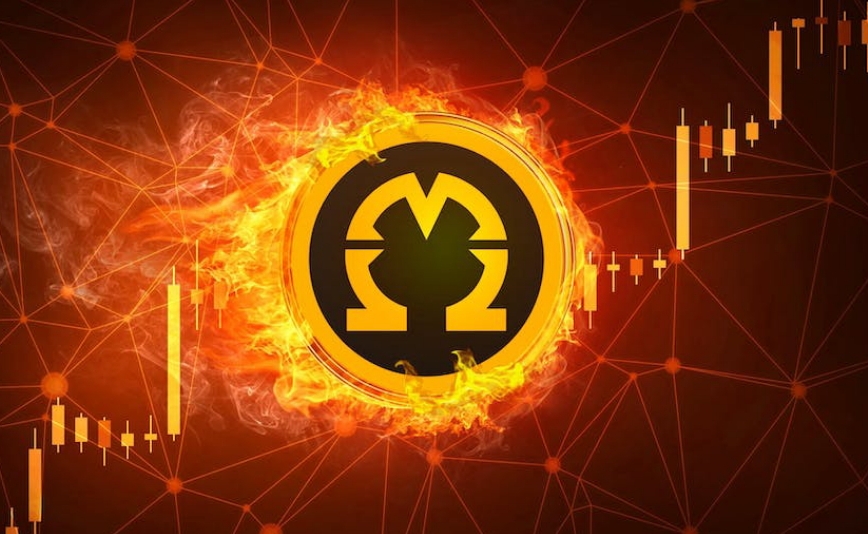Omega Network , a project inspired by the successful Pi Network model, aimed to capture the imagination of the crypto community with its mainnet launch on June 16. However, within just one month, the optimism turned to disappointment as the price of its native token, OMN (Omega Network), experienced a sharp decline from $0.03 to $0.012, resulting in a loss of two-thirds of its initial value.
The Importance of a Well-Developed Ecosystem for Omega Network
Omega Network’s story is a stark reminder that merely launching a mainnet does not guarantee an increase in token value. While a mainnet launch can signal a project’s progression and technological development, it is the ecosystem surrounding the token that ultimately determines its success or failure. A thriving ecosystem requires a diverse range of participants, including users, businesses, and investors, all working in harmony to bolster the token’s value.
The Pi Network Model Inspired Omega Network
The Pi Network , which had inspired the Omega Network project, achieved significant popularity by offering a novel approach to mining cryptocurrencies. By enabling users to mine Pi coins on their mobile devices without the need for energy-intensive processes, Pi Network managed to attract millions of users worldwide. However, the value of Pi remained speculative until it could demonstrate a robust ecosystem and widespread adoption.
The Omega Network Hype and Mainnet Launch
Encouraged by the Pi Network’s initial success, Omega Network generated considerable hype around its project. The mainnet launch on June 16 was accompanied by fanfare, and the token, with the code OMN, was listed on five major exchanges—Bybit, OKX, Gate.io, Kucoin, and Mexc Global. At the time of the mainnet launch, OMN was trading at $0.03, sparking optimism among investors and enthusiasts.
The Downfall of OMN (Omega Network)
Despite the enthusiastic start, Omega Network’s mainnet struggled to live up to the expectations. The ecosystem surrounding OMN was not as robust and varied as anticipated, failing to attract significant business partnerships or large investors.
Additionally, the lack of a clear utility for the token outside of the speculative trading sphere added to its vulnerability. The result was a precipitous decline in the token’s value within just one month after the mainnet launch. OMN’s price dropped to $0.012, dealing a severe blow to early investors and contributing to a loss of trust in the project.

Lessons Learned
Omega Network’s short-lived success and subsequent decline offer several essential lessons for aspiring blockchain projects:
1. A Robust Ecosystem is Paramount: A vibrant ecosystem that caters to the needs of various stakeholders is crucial for a token’s success. It should offer real-world use cases, attractive partnerships, and a solid user base to foster confidence in the token’s value.
2. Early Mainnet Launches Carry Risks: Launching a mainnet prematurely, without adequate development and ecosystem-building efforts, can result in a negative perception and a loss of confidence in the project.
3. Utility is Key: For a token to gain real value, it must serve a purpose beyond speculative trading. Its utility should be evident, and it should solve real-world problems or provide unique advantages to users.
4. Community Trust Matters: Building and maintaining the trust of the community is vital for the long-term success of any project. Misleading marketing or overhyped promises can erode trust quickly.
5. KYC Users and Mass Adoption: Achieving mass adoption and attracting a large number of Know Your Customer (KYC) verified users is crucial for legitimizing a project and enhancing its value proposition.
Omega’s journey from hype to disappointment serves as a cautionary tale for blockchain projects seeking to emulate successful models. While the Pi Network inspired many, it demonstrated that a well-developed ecosystem, token utility, and widespread adoption are the key factors determining a token’s long-term success and value.
As the crypto landscape continues to evolve, blockchain projects must prioritize building a strong foundation before embarking on grand ambitions. Only with a solid and diverse ecosystem, along with the trust of their community, can projects hope to thrive and realize their full potential in the competitive world of decentralized finance.
The Road Ahead for Omega Network and Lessons for the Crypto Community
Despite the setback faced by Omega, there is still a chance for the project to recover and learn from its mistakes. The team behind Omega Network must now focus on addressing the shortcomings of the project, such as developing a robust ecosystem, fostering real-world use cases, and building strategic partnerships with businesses. Rebuilding trust within the community and demonstrating a clear roadmap for future development are essential steps to regain confidence in the project.
For the wider crypto community, Omega’s experience serves as a valuable lesson. It highlights the importance of due diligence when evaluating new blockchain projects.
Investors should look beyond initial hype and marketing campaigns to understand the underlying technology, utility, and development plans of a project before committing their resources. Furthermore, the concept of “early adopter” rewards must be approached with caution. While incentivizing early participation can help kickstart a project, it should not overshadow the long-term viability and sustainability of the ecosystem. Sustainable growth and value creation should be at the forefront of any project’s strategy.
The Pi Network Model and Its Success Factors
While Omega Network’s journey has been a cautionary tale, it is essential to recognize the factors that contributed to the early success of the Pi Network. Pi Network managed to attract millions of users due to its unique approach to mining, which required minimal energy consumption compared to traditional Proof-of-Work systems.
The Pi Network’s early success can be attributed to the following key factors:
1. Simplicity and Accessibility: Pi Network made cryptocurrency mining accessible to a wide audience by allowing users to mine coins on their mobile devices without specialized hardware or excessive energy consumption.
2. Community Building: Pi Network focused on community engagement and rewards, encouraging users to invite others to join, which led to exponential growth.
3. KYC Verification: Implementing Know Your Customer (KYC) verification added credibility to the project and mitigated potential concerns related to fraud or misuse.
4. Gradual Release of Tokens: Pi Network implemented a gradual release of tokens, preventing massive dumps in the market that could negatively impact token value.
5. Consistent Development: The Pi Network team consistently updated the project and provided regular progress reports, maintaining transparency and community trust. While the Pi Network’s success story remains an inspiration for many projects, it is essential to remember that every project is unique, and what works for one may not guarantee success for another. Each project must find its own path to success, driven by genuine utility, value proposition, and a thriving ecosystem.
Omega Network’s mainnet launch and subsequent price decline served as a stark reminder that success in the crypto space is not guaranteed by merely launching a mainnet. Building a successful blockchain project requires a well-developed ecosystem, genuine utility, and widespread adoption by a diverse user base.
The Pi Network model’s early success is a testament to the power of community engagement, simplicity, and accessibility. However, it is crucial for aspiring projects to understand that true value and sustainability come from addressing real-world problems and building a solid foundation for growth.
As the blockchain industry continues to mature, projects that prioritize long-term sustainability and value creation are more likely to thrive, leaving behind the hype-driven ventures that fail to deliver on their promises. It is through such experiences that the crypto community can learn and grow, making the space more robust and trustworthy for all stakeholders involved.
Read our other news post on Omega Network












